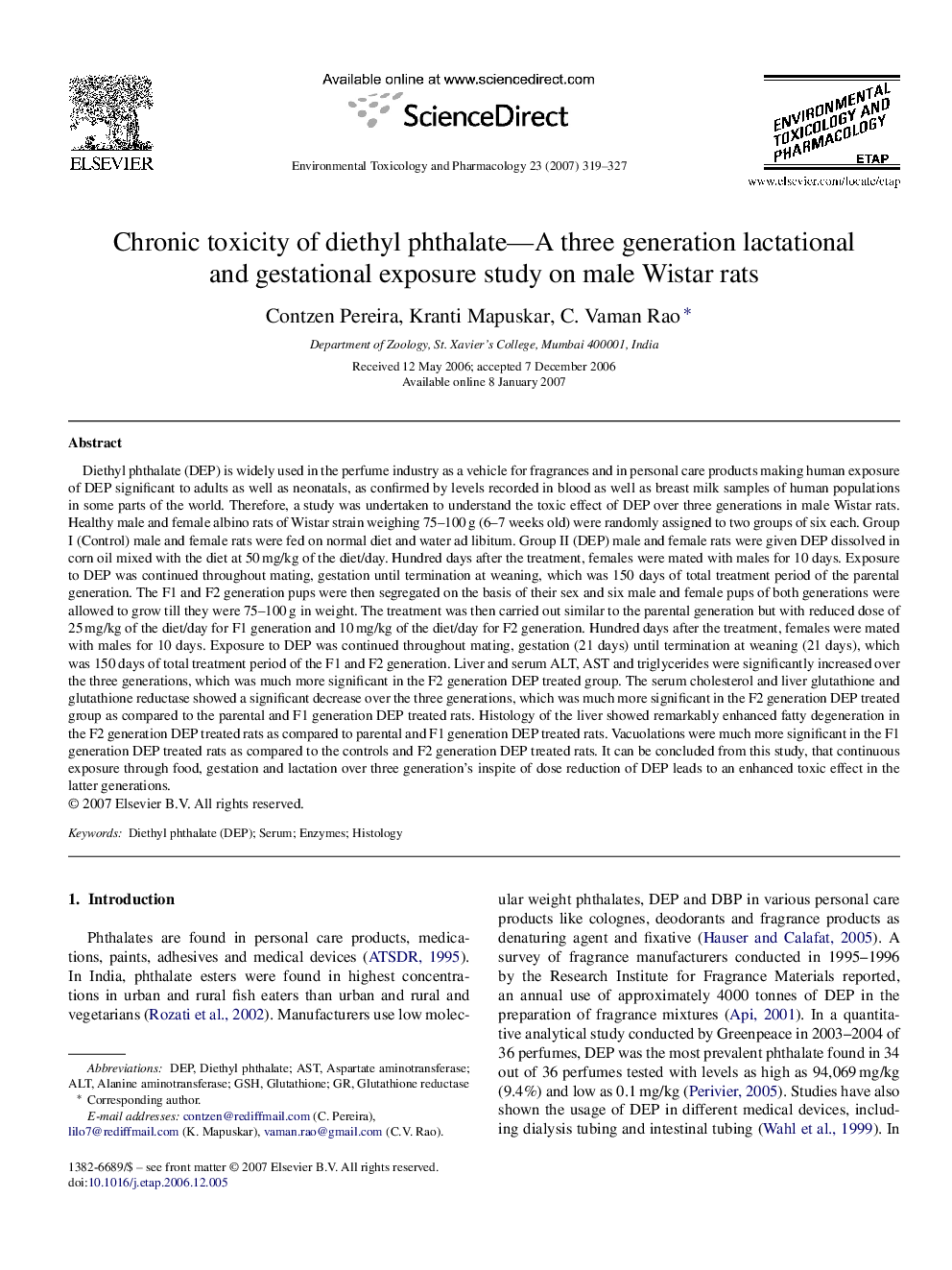| کد مقاله | کد نشریه | سال انتشار | مقاله انگلیسی | نسخه تمام متن |
|---|---|---|---|---|
| 2584521 | 1130746 | 2007 | 9 صفحه PDF | دانلود رایگان |

Diethyl phthalate (DEP) is widely used in the perfume industry as a vehicle for fragrances and in personal care products making human exposure of DEP significant to adults as well as neonatals, as confirmed by levels recorded in blood as well as breast milk samples of human populations in some parts of the world. Therefore, a study was undertaken to understand the toxic effect of DEP over three generations in male Wistar rats. Healthy male and female albino rats of Wistar strain weighing 75–100 g (6–7 weeks old) were randomly assigned to two groups of six each. Group I (Control) male and female rats were fed on normal diet and water ad libitum. Group II (DEP) male and female rats were given DEP dissolved in corn oil mixed with the diet at 50 mg/kg of the diet/day. Hundred days after the treatment, females were mated with males for 10 days. Exposure to DEP was continued throughout mating, gestation until termination at weaning, which was 150 days of total treatment period of the parental generation. The F1 and F2 generation pups were then segregated on the basis of their sex and six male and female pups of both generations were allowed to grow till they were 75–100 g in weight. The treatment was then carried out similar to the parental generation but with reduced dose of 25 mg/kg of the diet/day for F1 generation and 10 mg/kg of the diet/day for F2 generation. Hundred days after the treatment, females were mated with males for 10 days. Exposure to DEP was continued throughout mating, gestation (21 days) until termination at weaning (21 days), which was 150 days of total treatment period of the F1 and F2 generation. Liver and serum ALT, AST and triglycerides were significantly increased over the three generations, which was much more significant in the F2 generation DEP treated group. The serum cholesterol and liver glutathione and glutathione reductase showed a significant decrease over the three generations, which was much more significant in the F2 generation DEP treated group as compared to the parental and F1 generation DEP treated rats. Histology of the liver showed remarkably enhanced fatty degeneration in the F2 generation DEP treated rats as compared to parental and F1 generation DEP treated rats. Vacuolations were much more significant in the F1 generation DEP treated rats as compared to the controls and F2 generation DEP treated rats. It can be concluded from this study, that continuous exposure through food, gestation and lactation over three generation's inspite of dose reduction of DEP leads to an enhanced toxic effect in the latter generations.
Journal: Environmental Toxicology and Pharmacology - Volume 23, Issue 3, May 2007, Pages 319–327